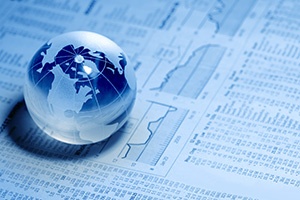 As we close out the first quarter of 2017, all I can say is that it’s been a great one, economically and financially. Despite all of the worry and turmoil—in Washington, DC, and elsewhere in the world—markets have risen substantially and the economy has continued to grow.
As we close out the first quarter of 2017, all I can say is that it’s been a great one, economically and financially. Despite all of the worry and turmoil—in Washington, DC, and elsewhere in the world—markets have risen substantially and the economy has continued to grow.
Stage is set for further growth
In fact, this morning’s report on GDP growth came in at 2.1 percent for the fourth quarter of 2016, up from 1.9 percent the previous quarter and beating expectations of 1.9 percent. Growth at the end of last year was reasonably healthy, and prospects for the first quarter also look reasonably solid. Though some analysts are projecting lower growth, this would be consistent with previous years, when lackluster growth in the first quarter rebounded substantially later in the year.
In any event, we start the second quarter with much better sentiment. Both consumer and business confidence continue to rise, which should provide a tailwind for faster growth. Job creation remains very strong, and wage growth also continues to rise. Around the world, both Europe and Asia are seeing faster growth, marking the first synchronized global expansion since the crisis. The economic news looks good.
From a market perspective, the prospects are fairly good as well. The second quarter isn’t likely to repeat the first, but strong economic fundamentals, along with rising corporate earnings, could continue to push markets higher. Rising confidence will support valuation levels and also offers a real possibility of upside surprises in the hard economic data, which could translate into even better-than-expected earnings growth.
Political headwinds may die down
Another potential boost for the economy and markets is a possible reduction in political risk. With the turmoil in DC, the pending European elections and start of Brexit, and continuing concerns in Asia, there’s been no shortage of political risk, both real and perceived. The fact that markets have continued to rise despite the worries reflects the strong economic fundamentals. Even so, politics has probably acted as a headwind, especially over the past several weeks.
In many areas, we can expect the political news to get better (or at least less bad), which should alleviate that headwind. In Europe, the news is good: the Dutch elections resulted in a victory for the center, the French polls are trending that way, and the situation in Germany is also favorable. Here in the U.S., there’s plenty of commotion in Washington, but given the current level of pessimism, it wouldn’t take much to register an improvement.
Overall, then, things are actually pretty good and likely to keep getting better. Although the first quarter may end up being a bit slow economically, the markets have clearly indicated that they expect growth to continue. In the face of improving confidence here in the U.S., and widespread expansion and risk reduction abroad, that seems like a very reasonable conclusion.


 Print
Print


